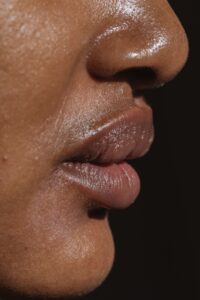Say Goodbye to Blackheads

Pore strips are a popular skincare item that help to remove blackheads and other impurities from the skin. While there are many pore strips available on the market, they can be expensive and often contain harsh ingredients that can irritate the skin. Fortunately, it’s possible to make your own pore strips at home using natural ingredients that are gentle on the skin. In this blog post, we’ll show you how to make DIY pore strips that are easy, effective, and affordable.
What are Pore Strips?
Before we get into the DIY pore strips, let’s first discuss what they are and how they work. Pore strips are thin, adhesive strips that are applied to the skin, left to dry, and then peeled off. As they are peeled off, they pull out impurities, such as blackheads and excess oil, from the pores. They are particularly effective on the nose and chin, where blackheads are most common.
Why Make Your Own Pore Strips?
While store-bought pore strips are convenient, they can be expensive and often contain harsh ingredients that can irritate the skin. Making your own pore strips at home allows you to customize the ingredients to suit your skin type and avoid any potential irritants. Plus, DIY pore strips are affordable and can be made using ingredients you likely already have in your pantry.
DIY Pore Strips Recipe
Ingredients:
- 1 tablespoon of unflavored gelatin
- 1 ½ tablespoons of milk
- A few drops of tea tree oil (optional)
Instructions:
- Mix the gelatin and milk in a microwave-safe bowl until well combined.
- Microwave the mixture for 10 seconds, then stir. Repeat this process until the mixture is smooth and liquid.
- Add a few drops of tea tree oil to the mixture (optional).
- Allow the mixture to cool slightly, then apply it to the areas where you want to remove blackheads, such as the nose and chin.
- Wait for the mixture to dry completely (around 15 minutes).
- Gently peel off the pore strip, starting from the edges.

Tips for Making DIY Pore Strips
Here are some tips to help you make the most out of your DIY pore strips:
- Test a small area of your skin first to make sure you’re not allergic to any of the ingredients.
- Make sure the mixture is completely dry before you peel off the pore strip. If it’s not dry, it won’t work effectively.
- Avoid applying the mixture to areas with facial hair, as it can be painful to remove.
- Don’t use these pore strips too frequently, as they can be drying to the skin.
- Follow up with a gentle toner and moisturizer to soothe and hydrate the skin.
Other Ingredients to Try
While the recipe above is a great place to start, you can also experiment with other ingredients to make pore strips that are tailored to your skin’s needs. Here are some other ingredients to consider:
- Activated charcoal: helps to detoxify the skin and draw out impurities
- Honey: has antibacterial properties and can help to soothe and hydrate the skin
- Lemon juice: contains alpha-hydroxy acids that can help to exfoliate the skin and brighten the complexion
- Witch hazel: has astringent properties that can help to tighten pores and reduce oiliness
In conclusion, making your own DIY pore strips at home is a great way to save money, avoid harsh ingredients, and customize the ingredients to suit your skin’s needs. With just a few simple ingredients, you can make pore strips that effectively remove blackheads and other impurities from the skin. Just remember to test a small area of your skin first, allow the mixture to dry completely, and avoid using the strips too frequently to prevent over-drying the skin.

